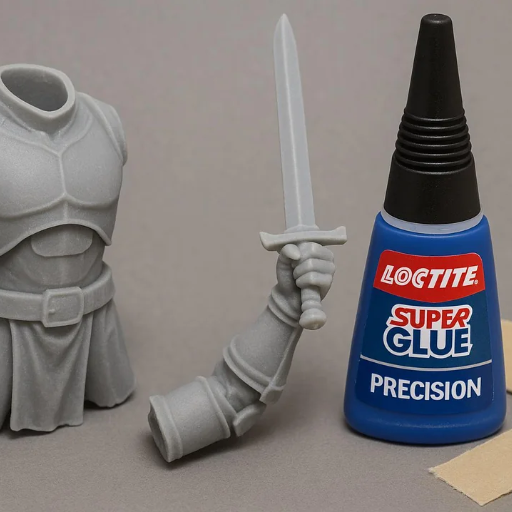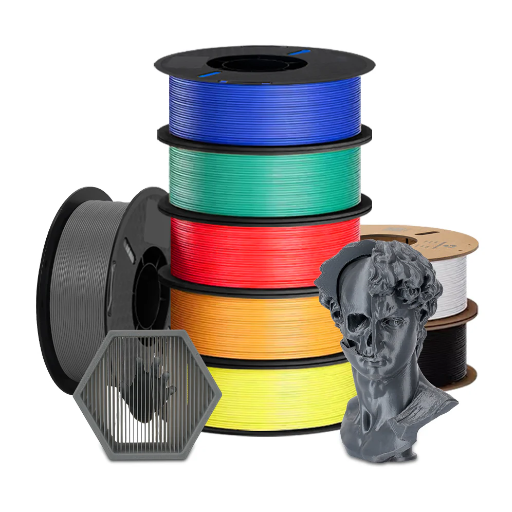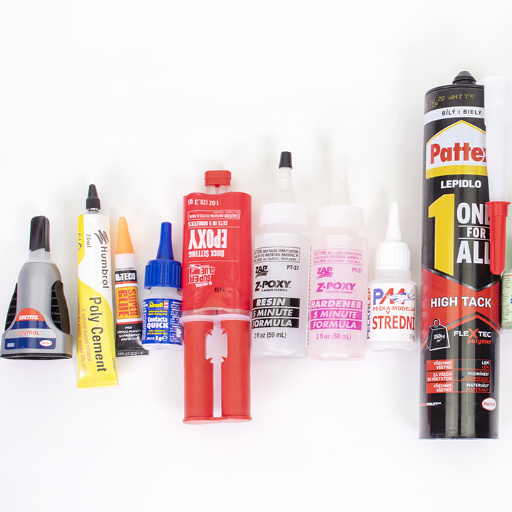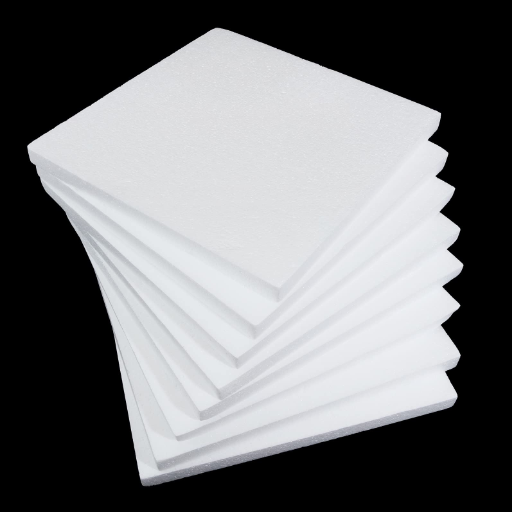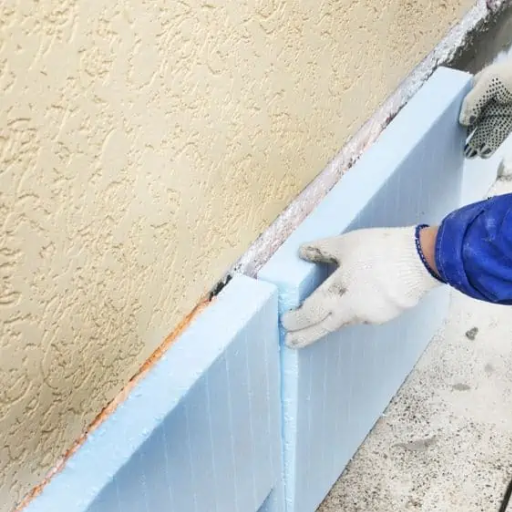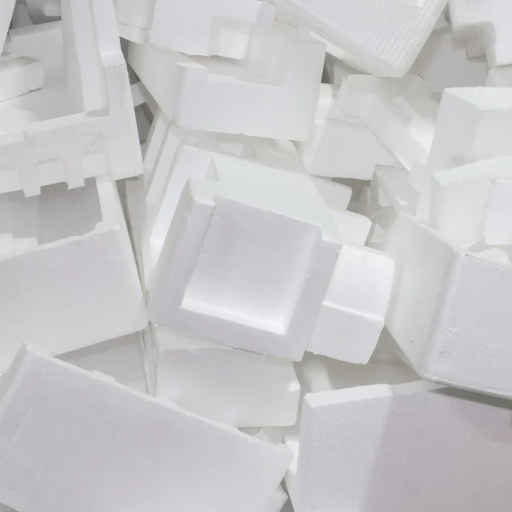Loctite Super Glue is one of the most popular adhesives for household and industrial use as it has a range of uses. It bonds metal, ceramic, plastic, wood, and a dozen other materials with high accuracy and in minimal time. In this blog, I will explain in detail everything that concerns Loctite Super Glue, from its composition and key features to the best methods of application and safety measures. This guide serves as a go-to for everyone who needs to fix items around the house or professionals who want to get the most out of the product. Follow me to unlock science secrets of Loctite and its chemical composition alongside useful tips for super results.
How Do You Use Loctite Super Glue?

For effective use of Loctite Super Glue, first make sure the surfaces you want to bond are clean without any dust, dirt, grease or moisture. Following that, apply a thin layer of glue on one surface. Remember, it is better to use a little glue than a lot, since a stronger bond is better achieved with less glue. Firmly press the two surfaces together for 15 to 30 seconds. The bond will attain enough strength during this time to support the required load but for best results wait 24 hours. It is advisable to let the glue cure for a full day after setting. After every use, remember to securely close the cap to ensure it lasts longer and put on the gloves adhere to avoid contact with your bare skin.
Preparing the Surface for Adhesion
Applying the Loctite Super Glue Gel
To use Loctite Super Glue Gel, first, remove the cap and check that the nozzle is clear. Aim the nozzle at the previously cleaned surface, and apply a thin layer of gel on one side. Remember not to apply too much glue as the bond will be stronger with a smaller amount. As best as possible, try to position both surfaces in the correct manner because it is hard to move them after some of the adhesive is applied and begins to set. Make sure to hold the surfaces in place for 15-30 seconds so that they can form a strong bond. The best results for curing glue will come if it is left for a minimum of 24 hours at the right temperature and humidity levels stated by the manufacturer. The quality of the gel will be the best if kept sealed and stored in a dry area.
Tips for Maximum Control and Precision
- Prepare the Surface: Both surfaces must be devoid of dirt, grease, or old adhesive residues. Cleaning must be done using isopropyl alcohol or any adequate cleaner.
- Use the Right Amount: Apply adhesive like in previous steps with gentler hand. Do not glop it on – rather spread it in a thin, even layer. Overapplication, in any case, will lead to weaker bonds or uncontrolled spreading.
- Steady Your Hands: Multiple devices such as applicator tips or syringes can be employed to increase the range of application. Brushes can used.
- Control Work Environment: Keep the temperature and humidity at controlled levels to the manufacturer’s guidelines. Always operate under direct or minimal airflow to avoid premature adhesive stringing.
- Practice Alignment: Reduce the chances of mistakes during the bonding process by confirming each piece’s alignment and fit before applying the adhesive using a dry fit method.
What Are the Features and Benefits of Loctite Super Glue?

Loctite Super Glue is famous for its extraordinary bonding performance and use across many different materials. It has a lot of features, such as an ultra quick Loctite Super Glue application that sets in seconds. This makes it perfect for fast and immediate repairs. Precise applicators allow for accurate application even in small or fragile areas. Also, Loctite Super Glue provides excellent strength, enduring bonds that can endure substantial stress as well as environmental moisture and temperature changes. Users enjoy its wide ranging compatibility with metal, ceramic, plastic, wood and rubber highlighting its versatility for countless projects. The speed, trust and reliability of Loctite Super Glue makes it a popular choice for everyone from professionals to casual users.
Understanding the Gel Formula
Loctite Super Glue Gel has been specifically designed for maneuverability and control, especially for use on vertical and porous materials. Unlike liquid adhesives, the gel formula does not drip, making it easier to apply precision where intricate work is needed. Its thick viscosity also allows users to apply glue to designated areas with more accuracy. Moreover, the gel’s composition allows it to fill small spaces in between materials, ensuring strong and lasting adhesion even if the surfaces are rough. Its special formulation offers rapid setting speeds and works across many different types of materials.
Advantages of Using Super Glue Liquid
- Versatility Across Materials
Super Glue Liquid can reliably bond many materials such as wood, metal, plastic ceramic, and rubber because of its reliable traits. It’s able to make simple and complex constructions and repairs with ease.
- Fast Bonding and Curing Time
It is liquid super glue that guarantees instant adhesion and curing of bonds, often in seconds. This quality helps to save time and improve productivity during repair and assembly work.
- Strong and Durable Bonds
- Precision Application
Super glue’s liquid state makes it easier to apply in narrow spaces or more complicated designs. It will freely flow into small lines and spaces which makes it possible to achieve a clean and tidy outcome without wasting glue.
- Temperature and Moisture Resistance
A number of super glue liquid types have been made to resist high humidity and extreme temperatures which makes the bond secure in harsh weather conditions like outdoor cold regions or high temperature areas.
- Ease of Use
Super Glue Liquid boasts an easy application process alongside practical packaging, making it a simple product for people with all experience levels to achieve favorable outcomes.
How Loctite Super Glue Works Faster and Holds Stronger
Loctite Super Glue is one of the super glues that is trusted rave tag reviews because it bonds instantly as well as extraordinarily due to its cyanoacrylate-based formula which chemically reacts with moisture in surfaces, thus forming strong chains, deeply bonded at the molecular level. Such a fast curing process is suited to be almost immediate when compared to the chemical process of other adhesives. Super glue has been precision engineered to provide superior viscosity meaning it provides much better penetration to porous materials while getting rid of gaps which optimally improves the strength and dependability of the bond. Other than that, the adhesive formulation has shear resistors, hostile impact, and other danger factors like changing temperature and water which makes Loctite Super Glue much more effective. All these factors underscore the fact that Super Glue is better suited for any task and the results last much longer than other adhesives.
Which Products Can Be Used with Loctite Super Glue?

Most people need to bind either plastic, rubber, wood, leather, or ceramic at one point in their life. Luckily, Loctite Super Glue can take care of porous and non-porous surfaces with no trouble making it a great addition to mounting, restoring, or crafting valuables. But do note that polyethylene, polypropylene, and surfaces that are submerged in water shouldn’t be glued using this super glue. Clean and dry material work best for strong performance.
Using on Porous and Non-Porous Surfaces
Loctite Super Glue works well on porous and non-porous materials due to its bonding strength and rapid-setting features. On porous materials such as wood and ceramics, the glue provides some reinforcement with a rough mechanical bond due to the adhesive’s partial absorption. With metals, plastics, and glasses which are non-porous materials, the glue forms a strong surface-layer bond. Super-strong adhesion on all types of surfaces requires the materials to be clean, devoid of grease, debris, and utterly dry prior to applying the adhesive. Apply moderate pressure to the surfaces for a few seconds so that the bond sets properly. If possible, do not use excessive glue on either surface because it may obstruct bonding on either surface type.
Compatibility with Plastics, Ceramics, and More
Different types of adhesives have different compatibilities with materials. With plastics, one must check the specific classification since some adhesives bond strongly with rigid plastics such as PVC, ABS or polycarbonate, but others require additional treatment or special glues for softer plastics such as polyethylene or polypropylene. Epoxy resins work best when dealing with ceramics because they bond very firmly and durably when the surface is roughened to some degree to allow for adhesion. Additionally modern adhesives often have formulated for use on different substrates, which makes them useful for mixed-material projects. Always read the manufacturer’s requirements to check for compatibility and performance for the chosen material with regards to time.
Super Glue Liquid Control for Precise Application
Are There Expert Tips for Using Loctite Super Glue?

Yes, there are several expert tips to ensure faster and better results when using Loctite Super Glue. First, cleaning all surfaces to ensure that grease, dust, or any residues is removed because contaminants will always weaken the bond is a must. For certain materials, surfaces that have been lightly abraded can be easier to glue. Besides, make sure to apply a thin, uniform layer of glue, as too much of it could slow curing and performance will be affected. While enduring initial heating, bonded parts need to be held strongly for a recommended timeframe so a solid initial bond is set. Lastly, for future use, glue should be stored in a cool, dry place with the cap sealed tightly so effectiveness is retained. Lastly, optimal results will always be assured if the instructions provided by the manufacturer are followed.
Avoiding Common Mistakes When Using Cyanoacrylate
If not handled with care, cyanoacrylate glue can be less effective when mistakes are made. Not cleaning or preparing the surfaces before applying the glue can lead to weak bonds. In other words, parts must be clean, dry, talc-free and free from moisture before applying glue. It is also a common mistake to use too large amounts of glue. Applying too much cyanoacrylate can hinder bond formation over time. A thin, even coat of glue is the way to go—no more and no less. Proper positioning before bonding is often ignored, but it is worth emphasizing. Since cyanoacrylate sets quickly, it is important to position the parts correctly the first time to minimize rework. Another essential problem is gluing incompatible materials. Suitable materials must be prechecked; otherwise glue will not hold together the whole joint or worse yet, react improperly. Improper storing techniques such as leaving the cap off or exposing the glue to moisture, humidity, can lead to decreased the glue’s shelf life—and can cause bail down of the glue before even stored properly.
How to Ensure Quick Fix and Superior Performance
For best results when using adhesives, follow these steps. First, pre-clean the bonding surfaces to ensure there is no dust, oil, or debris as contamination affects adhesion strength. To clean materials, use a cleaning agent appropriate to the materials in question for utmost effectiveness. Second, pick an adhesive that fits the materials and their application needs. Check the product specifications and technical datasheets for important compatibility factors, such as resistance to temperature, moisture, or load requirements, before using the product. Third, apply the adhesive at the environmental conditions recommended by the manufacturer, in terms of temperature and humidity, for curing the adhesive, as these conditions allow optimal curing. Fourth, apply the right amount of adhesive for the application. Over applying or under applying adhesive will lead to excess material spillage or weak bonds respectively. Lastly, the bond should not be exposed to stress until the cure time for maximum strength is reached. By following these steps, you will ensure simple solutions that require minimal effort while guaranteeing exceptional performance that lasts.
What Should You Do if Something Goes Wrong?

As with everything else in life, there is always an order needed to solve problems. With epoxy adhesive application, poking at problems or steps that go wrong without bearings may not be the best or most efficient way to go about it. You might want to consider starting with the basics: did the surface get prepared correctly, was the correct adhesive selected, and was the curing temperature maintained at a reasonable level? Begin with proper surface cleaning, elimination of residual glue, and scrub the surfaces clean before applying adhesive again if there is bond failure. If proper curing is the problem, ensure that all relevant environmental considerations are in bounds with the referenced guidelines provided by the manufacturers. If the issue is resolved due to excessive cured adhesive, there is no need for drastic measures – just a light touch to remove these excess materials. For additional guidance, do not hesitate to consult technical support from the manufacturer or the supplied product documentation available for more complex problems.
Dealing with Dried Glue on Surfaces
Removing dried glue from surfaces requires different techniques depending on the adhesive and the material type. For most PVA glues and white glues, soaking in warm, soapy water and gentle scraping with a plastic scraper usually does the trick. For stronger types of glue like super glue, using either acetone or specific adhesive removers is best, but testing on a small, hidden area first is wise. Epoxy will likely need to be sanded or scraped because chemical solvents cannot penetrate it once fully cured. Always wear gloves and ensure ventilation if using chemical solvents or dealing with stubborn residues.
Removing Glue from Skin Safely
This guide describes how to gently remove glue from skin, starting with the loosening of the glue itself. Submerging the attached limb in warm, soapy water for a number of minutes tends to aid in loosening the adhesive. Super glues, also known as cyanoacrylate glue, will benefit from the addition of acetone-based nail polish remover. Be sure to use a q-tip so that the polish remover is not exposed to any sensitive skin. Vaseline works wonderfully on sensitive areas, and so does olive oil, as both of these constituents help break down the oil in the glue. When dealing with epoxy, glue may be required to be mechanically scraped off with the aid of a pumice stone or finely grit nail file. After removing the glue’s residue, it is essential to wash the area thoroughly while also applying a loved lotion of your choice. Should any irritation crop up after using these methods, it is wise to reach out to a doctor.
How to Fix Bond Failures on Various Materials
Failure of bond can happen due to improper surface preparation, wrong materials used, or even inadequate curing times which is insufficient as well. To properly fix the issue:
- Metal Surfaces – Ensure the area is clean, dry, and free from grease or oxidation. Use a squeegee mop or an agitator pad to clean and prep. Abrade the surface to achieve the desired bonding surface profile. Use acetone or epoxy or cyanoacrylate specially formulated adhesives for metal; remember to allow sufficient curing time.
- Wood Surfaces – In order to create the smooth surface necessary for bonding, dust the wood surface and sand it. Use the appropriate type of wood glue, either for softwoods or hardwoods, and spread it evenly across the surface. Once applied, clamp the pieces securely and do not disturb them until cured.
- Plastic Materials – Determine what type of plastic it is, because some such as polyethylene or polypropylene have to use special glues. Clean the surface with isopropyl alcohol, and sand it lightly if needed, then apply the glue specially designed for plastics. Outdoor applications may need UV resistant or flexible glues.
- Glass Surfaces – Clean the glass surface taking care to use an alcohol-based cleaner that removes any dust and oils. For glass, use adhesives such as clear epoxy or silicone adhesives designed for glass. Apply the epoxy or silicone glue evenly to the glass without any pressure during the initial stages of bonding, so that a firm bond results.
- Ceramic/Porcelain – When dealing with ceramics, ensure the edges align properly with the along the boundary which requires cleaning the region. Use heat and stress resistant ceramic adhesives designed for the task, be it epsom or glue. Tape or clamp the area once they cure to ensure a secure bond.
Regardless of the material, ensure that the instructions provided by the adhesive manufacturer are followed, that an adequate bond curing period is allowed to achieve optimal bond strength, and that a non-destructive test is performed prior to stressing the repair. After repeated failure, seek advice from material experts or switch to stronger bonding materials designed for industrial use.
References
Frequently Asked Questions (FAQ)
Q: What is Loctite Super Glue and how does it work?
A: Loctite Super Glue is a cyanoacrylate super glue that bonds quickly and provides superior performance over ordinary super glues. It works well on a variety of porous and non-porous materials, making it ideal for various applications.
Q: What types of surfaces can I use Loctite Super Glue on?
A: Loctite Super Glue can be used on a variety of surfaces including wood, metal, plastic, polystyrene, and more. It is designed to work well on both porous and non-porous materials.
Q: Is there a specific version of Loctite Super Glue for heavy-duty projects?
A: Yes, Loctite offers a heavy-duty cyanoacrylate super glue that works effectively for more demanding applications. This version provides a stronger bond and is ideal for tasks that require greater durability.
Q: How can I apply Loctite Super Glue without clamping?
A: Loctite Super Glue is designed to bond quickly, allowing you to hold the pieces together without the need for clamping. Simply apply a small amount of the glue to one surface, press them together, and hold for a few seconds.
Q: What is the difference between Loctite Super Glue Ultra and other versions?
A: Loctite Super Glue Ultra is a specialized formula that offers an advanced application experience. It features a precision tip for controlled dispensing and provides a strong bond for various materials.
Q: Where can I find documents and downloads related to Loctite Super Glue?
A: You can find documents and downloads related to Loctite Super Glue on the official Loctite website, where they provide technical data sheets, safety information, and usage instructions.
Q: Are there any related articles about using Loctite Super Glue effectively?
A: Yes, there are numerous related articles available online that provide tips and tricks for using Loctite Super Glue effectively, as well as troubleshooting advice for common bonding issues.
Q: How does Loctite Super Glue compare to ordinary super glues?
A: Loctite Super Glue provides superior performance over ordinary super glues, offering faster bonding times and a stronger, more reliable bond. This makes it a preferred choice for both DIY enthusiasts and professionals.
















